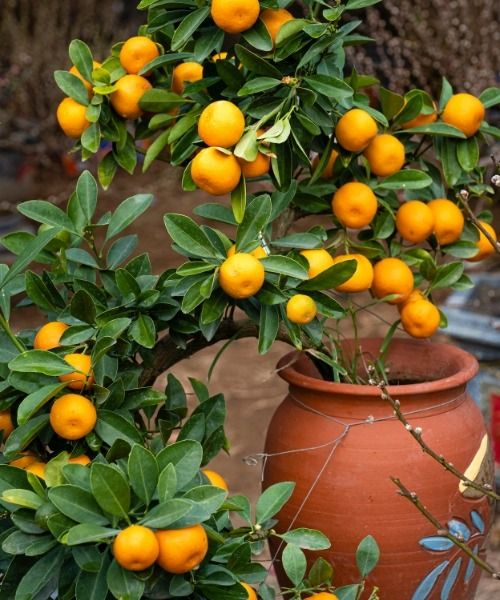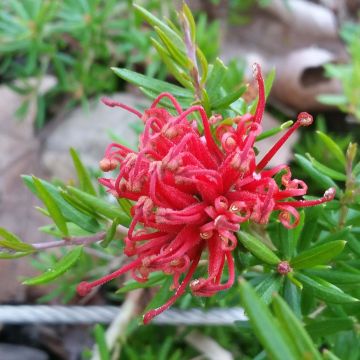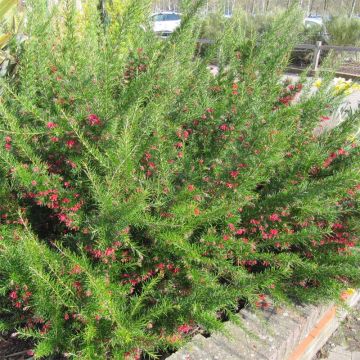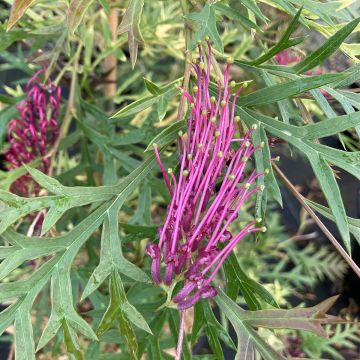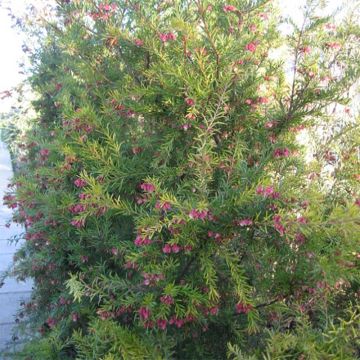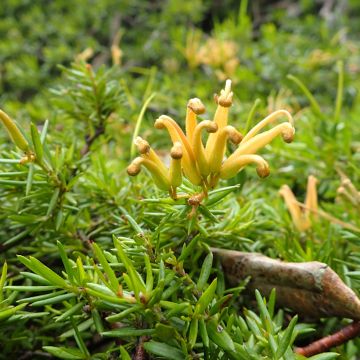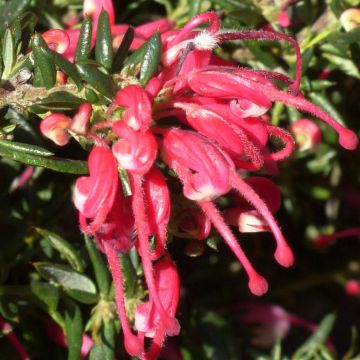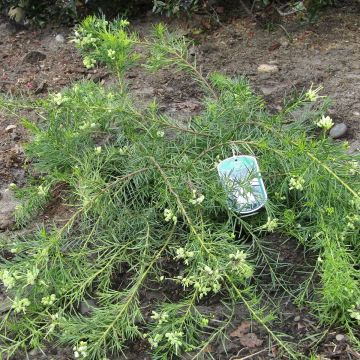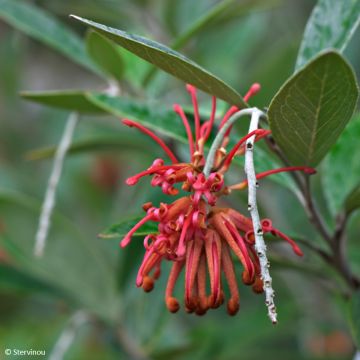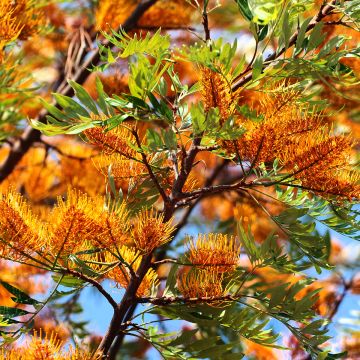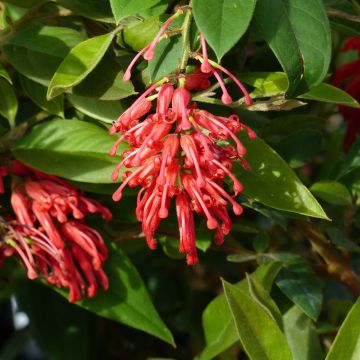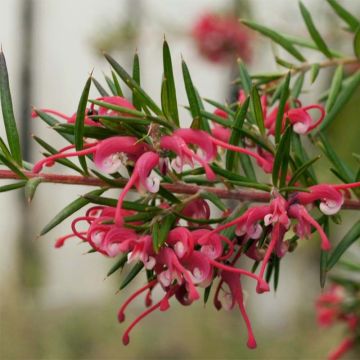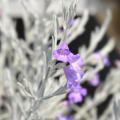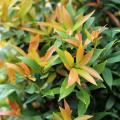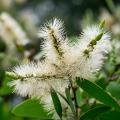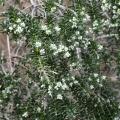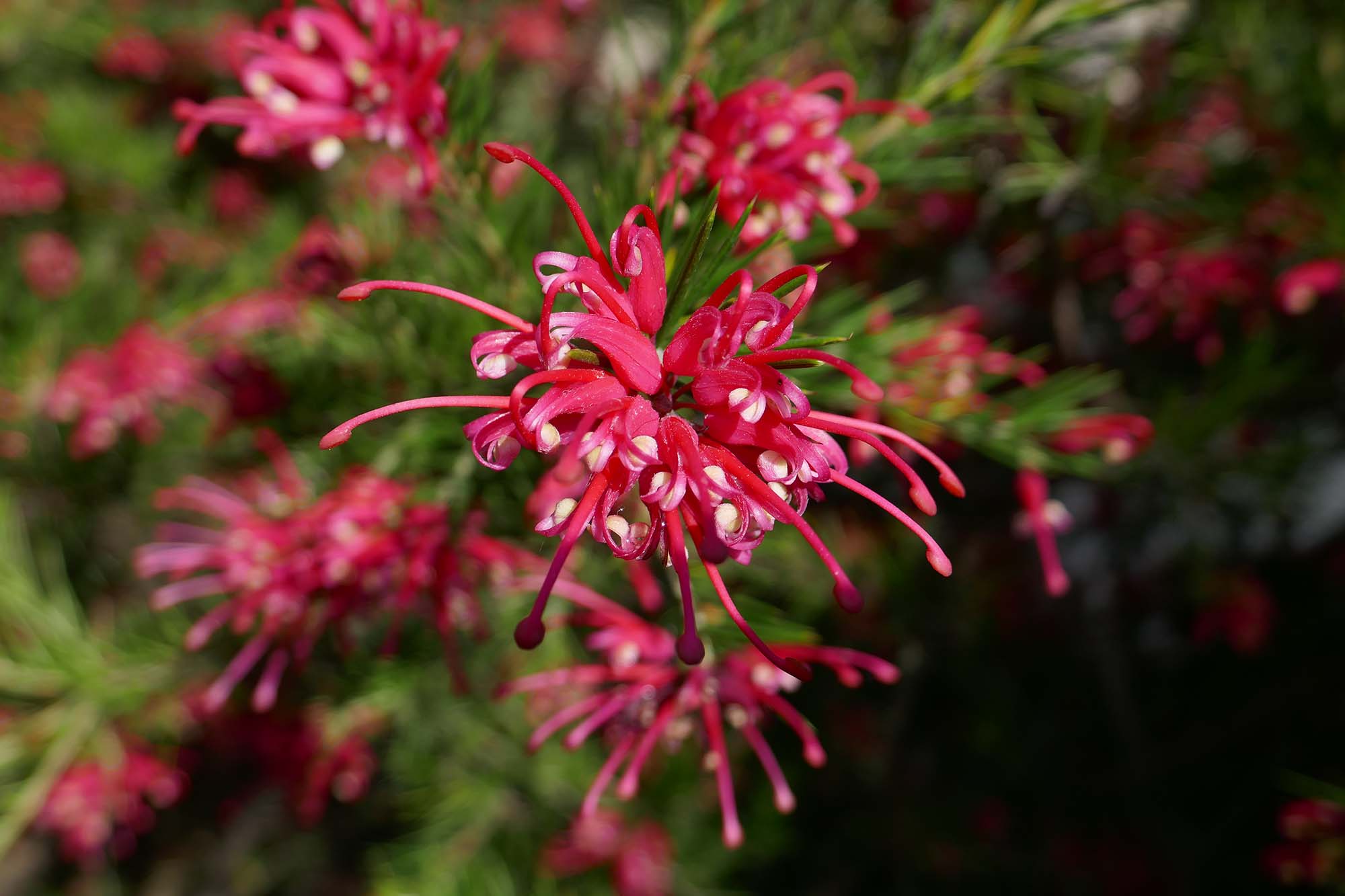Grevillea
Would this plant suit my garden? Set up your Plantfit profile →
Available in 1 sizes
Available in 1 sizes
Available in 1 sizes
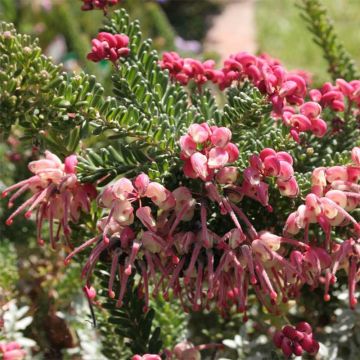
Available in 1 sizes
Available in 1 sizes
Available in 1 sizes
Available in 1 sizes
Available in 1 sizes
Available in 1 sizes
Available in 1 sizes
Available in 1 sizes
Available in 1 sizes
Available in 1 sizes
Available in 1 sizes
Available in 1 sizes
Available in 1 sizes
Grevillea, the most well-known of which is Grevillea juniperina or juniper-leaved Grevillea, are evergreen shrubs or small ornamental trees of Australian origin appreciated for their beautiful and long flowering from spring to summer, and sometimes even longer, in shades of red, pink, yellow, orange, or even white. These cousins of Protea are semi-hardy plants that prefer poor, well-draining, non-calcareous, and rather dry soils. They thrive in the ground in mild climates and can be easily grown in pots elsewhere. The hardiest among them is undoubtedly Grevillea rosmarinifolia, which can withstand short frosts of around -15°C (5°F) in a well-drained soil. Grevilleas exhibit a great diversity in terms of size, ranging from prostrate bushes of 15cm (6in) in height (Grevillea lanigera 'Mount Tamboritha') to small trees exceeding 10m (33ft), and also in terms of habit. Depending on the species, their foliage may resemble fern fronds or mimic conifer needles. Their long, abundant, and unique flowering consists of small petal-less flowers with prominent stamens, in various colours, gathered in terminal inflorescences that can take the form of a spider, an umbel, a globular shape, a cylinder, or a "toothbrush".
Like many other plants, Grevillea is not difficult to grow as long as the required conditions are met. This shrub requires little maintenance and tolerates light pruning, which will help it remain dense. It will preferably thrive in coastal gardens protected from severe frosts, where it can form dense and flowering hedges for a very long period, or create a stunning cushion on a slope or in a rockery for the shorter species and varieties. It is a good plant for dry gardens, requiring an open and sunny position. In an exotic or Mediterranean garden, it can be associated with Proteas, Agaves, Canary Island viper's bugloss, Madeira viper's bugloss, Callistemons, and Leptospermums. Growing in containers allows for control over the substrate composition and overwintering the shrub in a cold greenhouse or a very bright and minimally heated conservatory.
Haven't found what you were looking for?

































